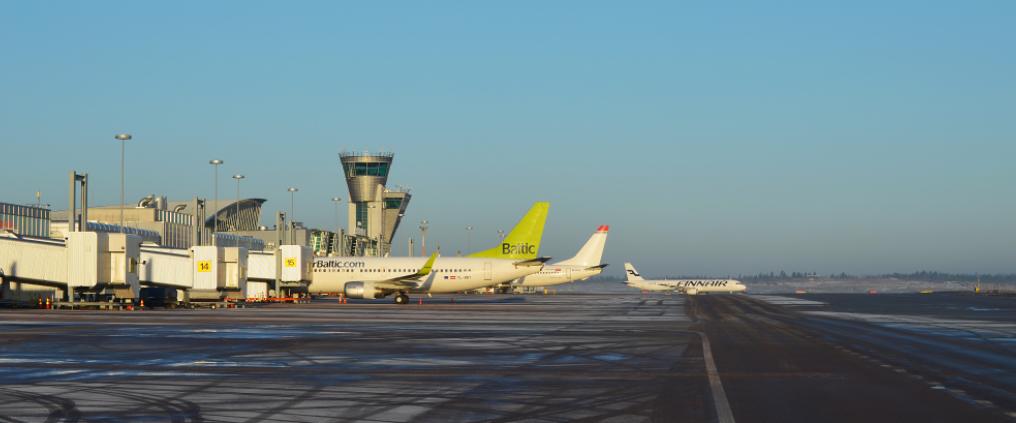Airlines, passengers and airports form an interconnected system, where each element affects the others. This is clear when opening new flight connections.
“For an airline, the most important thing to consider when planning flight routes is their profitability. To evaluate this, there are, roughly speaking, three variables: how many passengers a route can have, what price are they willing to pay, and what the operational costs of the route are,” says Vuori.
If the number of passengers – either those who remain at the destination or transfer to another flight – is not high enough, no flight connection will be established. Demand is not created in an instant, so airlines plan their routes and possible new destinations with a long-term approach.
Airport operators and airlines meet regularly
A key element in planning international flight routes is bringing airlines and airport operators under the same roof. This takes place in the international “Routes” conferences, where nearly all airlines and airports in the world participate.
“International air traffic operates in two seasons, summer and winter; and new destinations and routes are primarily planned twice a year. At the World Routes conference, as well as at regional conferences, we usually meet the representatives of around 50 potentially interesting airlines,” says Vuori.
For an airline, the attractiveness of the destination also has to do with its international accessibility and the possibilities for further travel connections. Competition, established collaborations between airlines, and airline profiling also play a part in choosing the right destinations.
“For an airport operator, it is important to spark an interest in the airline. When the airport is on the list of potential destinations, we can continue to present the arguments for why the airline should open a route to that particular destination,” Vuori says.
Analytics aid decision making
Finavia has developed analytics to use as a reliable basis in negotiations with airlines.
“Airlines base their decisions on facts. Finavia has a broad understanding of Finland as a destination and departures market, and we can gather data and knowledge about potential passenger numbers that foreign airlines don’t have. If a route, for example, has historically had 100 passengers per day with a layover flight, we can discuss why a direct flight could potentially raise the number to 500 passengers,” says Vuori.
When it comes to expenses, Finavia can present facts about the affordability for airlines to land and take off from Finnish airports, as well as their operative efficiency.
“At Finnish airports, turnarounds, meaning the process of the aircraft arriving and departing, are very affordable for airlines on a European scale. Our efficiency and reliability minimise the costs that airlines could have from process delays or flight cancellations, for example,” Vuori states.
Support for new routes
If the planning of a new route goes forward, the actual negotiation phase can usually last anywhere from six months to a couple of years and includes several meetings with the involved parties.
“Authorities also play an important role, especially in routes heading east from Finland. Even though a large part of air traffic has been liberalised within Europe and between Europe and North America, flight permits are a prerequisite when opening an eastbound route. In Finland, the whole air traffic sector is involved in this collaboration, and the process may take up to several years,” Vuori says.
When an airline decides to start flying to Finland or to expand their selection of Finnish destinations, Finavia's number one task is to ensure the level of operations and services.
Finavia can support the marketing of routes and take part in joint marketing initiatives with the airline. For new routes, Finavia offers support in the form of discounts on the landing and passenger fees, for instance.
“This is a universal practice. Airlines are aware that it can be difficult to make a route profitable from day one. For short-haul routes, we offer discounts for three years, and for long-haul routes, five years.”
New Chinese airlines at Helsinki Airport
In recent years, Helsinki Airport has invested in the growing Asian and especially Chinese market. This year, the Chinese airlines Juneyao Air, Tibet Airlines and Sichuan Airlines have started operations at the airport.
Collaboration with Chinese airlines that have recently started their international operations can be different from Western airlines, Vuori says. In China, the role of airports is different, as they are often directly responsible for providing things that airlines need, starting from aviation fuel. Finavia, on the other hand, works in a network where several service providers create services for airlines.
“In the coming years, the role of Helsinki Airport as a hub for air traffic between Europe and Asia will continue to increase. We have worked hard for our success in this field, and we are very happy to see the hard work now paying off in the form of new route openings,” says Vuori.
Read more: Less holding, less emissions – Finnish airspace makes smooth landing possible



